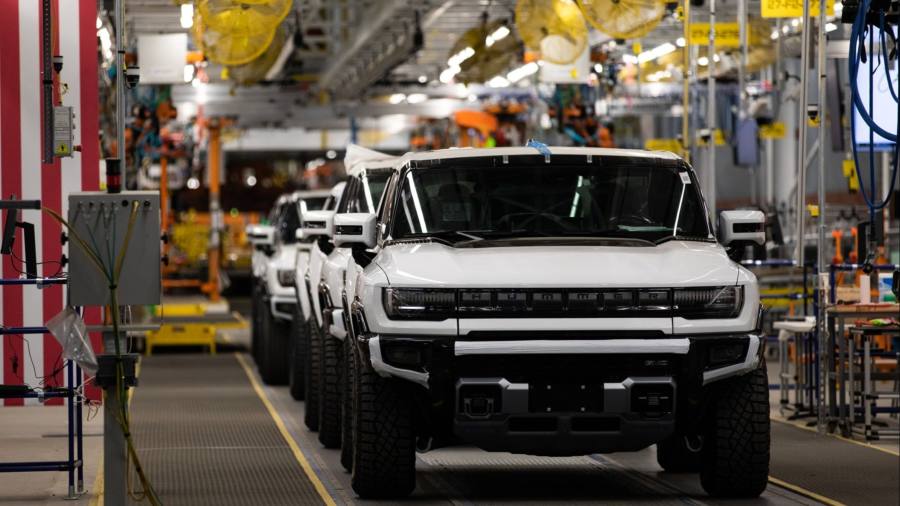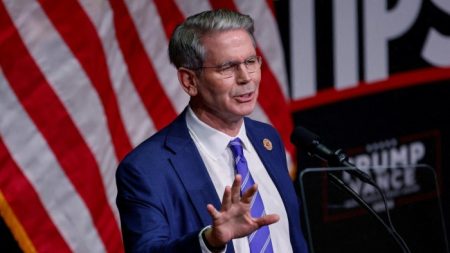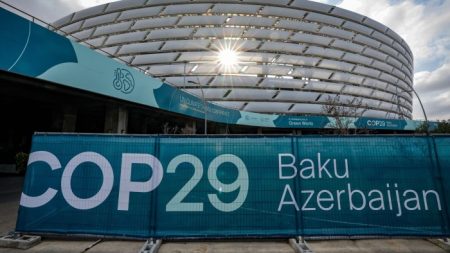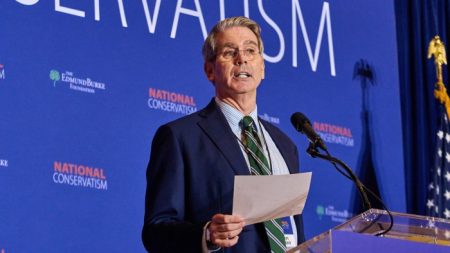General Motors plans to open a fourth battery plant in the US heartland, part of its programme to chase Tesla on electric vehicle sales by following a similar playbook.
Billionaire Elon Musk’s car company pursued a strategy of vertical integration over the past decade that helped make the Tesla Model 3 the best-selling EV in the country. More than three years ago GM, too, began building out its North American supply base for electric vehicles, constructing factories and striking deals to secure the raw materials to feed them.
It appears the Detroit carmaker’s plan is starting to pay off. GM passed Ford in the first quarter for the number-two spot in North American EV sales. It will have six models eligible for the full $7,500 tax credit available to consumers through the landmark Inflation Reduction Act — more than Ford, Volkswagen, Rivian or Tesla.
“We took that strategy because that is what we needed in order to help us grow this market,” said Sham Kunjur, executive director of GM’s EV Raw Materials’ Center of Excellence.
Still, the company has a way to go to cement its lead over Ford in EVs, let alone to catch Tesla, a goal chief executive Mary Barra outlined nearly three years ago. Ford idled the factory producing its Mustang Mach-E for improvements during the first quarter and also stopped production of the electrified version of its popular F-150 truck after a battery in one of the pick-ups caught fire. Those disruptions mean the second half of the year will show more clearly whether Ford or GM is going to claim second place in North American EV sales, said Guidehouse Insights analyst Sam Abuelsamid.
GM “has absolutely been more aggressive than any other automakers aside from Tesla” in vertically integrating, Abuelsamid said. But it is retiring its popular, first-generation electric vehicle, the Chevrolet Bolt, at the end of the year, and has had its own production struggles, with a slow ramp of the Cadillac Lyriq. For its strategy to succeed, GM must show it can churn out EVs en masse. Barra has said it will be producing 1mn EVs annually in 2025.
“If everything comes together in the second half of this year and 2024, they will be very well positioned to take that second-place position,” Abuelsamid said. “They’ve arranged all the right pieces, and now they have to move those pieces on the chessboard in the right sequence in order to get to their destination.”
GM’s vertical integration strategy grew out of two realities, Kunjur said. China had fostered its own EV supply chain over the previous decade. And while Tesla has partnered with Panasonic to build the Gigafactory, battery cells and components in North America available to GM were limited.
“What was available in North America, it wasn’t much, and we didn’t see a lot of movement in this space by natural forces. We felt we needed to control our own destiny.”
The company’s first battery plant owned and operated with LG Chem opened in August near Lordstown, Ohio. Their joint venture, Ultium, has two more factories planned in Tennessee and Michigan. A fourth plant, which Indiana’s governor announced on Tuesday would be located in that state, will be built with Samsung SDI. None of Ford’s announced battery plants in the US are operating yet.
GM has been moving upstream, too, as it tries to secure access to the components and minerals necessary to make batteries. It struck a deal in 2021 with the company Controlled Thermal Resources to extract lithium from a geothermal brine in southern California, and five months later agreed to work with Posco Future M to process cathode active material (CAM), a critical battery material that represents 40 per cent of the cost of the cell, in Quebec. The carmaker expanded the $1bn joint venture this month to increase production capacity for CAM and add production of the precursor materials needed to make it.
GM also said in January it will invest $650mn in the Thacker Pass lithium mine in Nevada to control exclusive rights to the first stage of the commodity’s production.
“If you’d ask us three years ago or four years ago if we would be directly engaged with mining companies, we would have clearly said no, but sometimes necessity is the mother of invention,” Kunjur said. “We had to change our mindset.”
The strategy has allowed GM to benefit from the IRA not just through the consumer tax credits that effectively lower prices, but also through production subsidies — although not as much as Tesla. The production credits allow carmakers and their battery partners to earn up to $45 per kilowatt-hour.
Creating a US supply chain for EV batteries requires significant investment, Kunjur said, and the IRA “definitely helped”.
Tesla and battery partner Panasonic will be eligible for an estimated $1.8bn in production subsidies this year, according to research from analyst Manish Dua at Benchmark Mineral Intelligence. GM and LG Chem are eligible for the second-highest amount in production subsidies this year, at an estimated $480mn. Ford is not eligible for any until 2025.
Over the decade GM and Ford will both earn more production subsidies as additional plants open, Dua said.
The three battery plants that GM either is operating or building have a combined capacity of roughly 125 gigawatt hours per year, Abuelsamid said. That is about three and a half times what Tesla has in North America.
If GM can carry out its plans, “they can probably catch up and surpass Tesla’s North American volumes”, Abuelsamid said. “But it all comes down to doing it.”
Read the full article here













